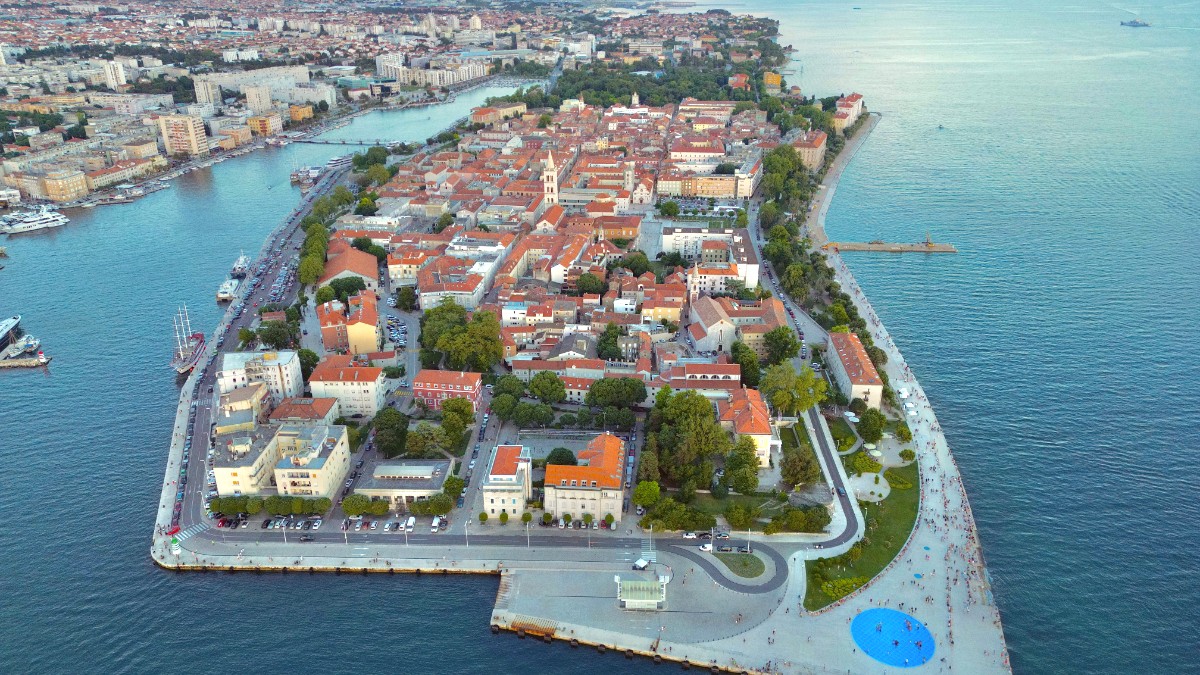
Dalmatia, Croatia
Imagine waking to the sound of waves composing music, a melody played by the sea itself. As the day ends, you witness a light show powered by the setting sun, a spectacle of color and innovation. This daily rhythm defines Zadar, a city where ancient stones meet contemporary art, creating an atmosphere found nowhere else. Visitors discover a place rich in history, yet constantly evolving. Zadar welcomes you to experience its charm, its warmth, and its spirit. Prepare to discover a city that captivates with its unexpected beauty and timeless appeal.
Zadar boasts a history spanning over three millennia, making it one of the oldest continuously inhabited cities in Croatia. The Liburnians, an ancient Illyrian tribe, first settled the area. Later, the Romans established a colony here, making it a thriving administrative and trading center. Evidence of Roman presence, like the forum and aqueduct remains, shapes the Old Town. After the fall of the Western Roman Empire, Zadar became part of the Byzantine Empire, then experienced periods of Croatian rule.
During the Middle Ages, Venice and Hungary often contested control, with Venice eventually gaining long-term dominance. The Venetian period, lasting from the 15th to the 18th century, profoundly shaped the city's architecture, fortifications, and culture. The impressive city walls, an UNESCO World Heritage site, date from this era, built to defend against Ottoman incursions. Later, Zadar fell under Austrian rule, followed by a brief Italian period between the two World Wars. World War II brought extensive bombing, destroying much of the city. Post-war reconstruction rebuilt Zadar, carefully preserving its historical layout and monuments. This layered history presents itself in the city's streets, where Roman columns stand beside medieval churches, and Venetian gates open onto modern promenades. Zadar's past positions it as a living museum, providing visitors a deep dive into European and Mediterranean heritage.
Zadar, an unique travel destination, with a mix of historical exploration, natural beauty, and relaxed coastal living.
Explore Zadar's core elements: its position, climate, currency, and what to see and do.
Zadar lies on a narrow peninsula on Croatia's central Dalmatian coast, a prime hub for exploring the wider region.
Mediterranean, with hot, dry summers and mild, wet winters. The shoulder seasons (May, June, September) offer warm weather and fewer crowds.
The Euro (€) is Croatia's official currency.
Do not miss the Sea Organ and Greeting to the Sun, innovative art installations that interact with the sea and sun. Explore the Roman Forum, St. Donatus Church, Zadar Cathedral, and the Venetian city walls.
Enjoy swimming at Kolovare Beach, explore nearby national parks like Krka and Paklenica, or take a boat trip to the Kornati Islands. Walk the pedestrianized Old Town, enjoy local cuisine, or simply relax by the sea.
The local food features fresh seafood, olive oil, and Mediterranean herbs. Taste traditional dishes like Peka and Black Risotto. Try the local Maraschino liqueur.
The Old Town is easily walkable. Local buses connect areas outside the center. Buses serve as the main mode of intercity travel. Ferries connect Zadar to its surrounding islands and Ancona, Italy.
Options range from hostels and family-run guesthouses to hotels and private apartments. Zadar is a safe city, but apply standard precautions against petty theft in crowded tourist areas.
Zadar, an unique travel destination, with a mix of historical exploration, natural beauty, and relaxed coastal living.
Zadar offers a compelling travel experience, blending rich history with contemporary flair. Here is a quick look at what awaits you:
This city provides varied attractions, from ancient Roman ruins to modern art installations, all set against the stunning backdrop of the Adriatic Sea.
Sea Organ, Greeting to the Sun, Roman Forum, St. Donatus Church, Zadar Cathedral, Venetian City Walls.
Swimming at Kolovare Beach, national park excursions (Krka, Paklenica), Kornati Islands boat trips, Old Town strolls, local cuisine sampling.
Euro currency, walkable Old Town, bus for intercity travel, ferries to islands, wide range of accommodation, generally safe city.
Zadar's Old Town welcomes pedestrians. For areas further afield, the local bus system operates efficiently. Buses represent the main mode of intercity travel, and ferries link Zadar to its islands and Ancona, Italy.